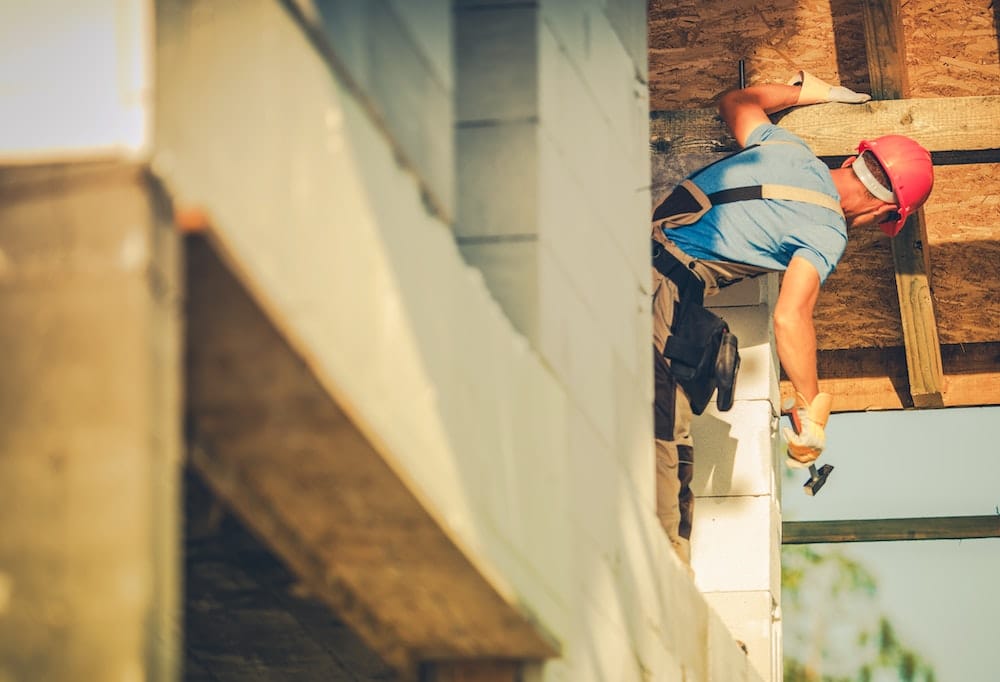How can real estate developers use advanced materials and construction techniques to improve building longevity and performance?

The construction industry is continuously evolving, driven by the need for durability, efficiency, and sustainability. Developers today face the challenge of building structures that are not only aesthetically pleasing but also energy-efficient and enduring. To achieve these goals, the industry has been progressively incorporating advanced materials and construction techniques into their practices. This article will delve into how real estate developers can leverage these innovative materials and techniques to enhance the longevity and performance of buildings.
1. Harnessing the Strength and Durability of New Construction Materials
New construction materials are being developed and refined to improve the overall strength and longevity of buildings. A shift from traditional materials like wood and steel to advanced materials can lead to substantial improvements in the durability of structures.
Dans le meme genre : What innovative methods can real estate developers use to ensure long-term sustainability and maintenance of their projects?
For example, consider one of the most widely used construction materials today: concrete. Although concrete has been used in the construction industry for centuries, recent advancements have led to the development of high-performance concrete (HPC). HPC has greater strength and durability than traditional concrete, thanks to the use of mineral admixtures and chemical additions. The enhanced properties of HPC can significantly increase the lifespan of a building, reducing maintenance costs and improving overall performance.
Composite materials, which combine two or more different types of materials, are also becoming increasingly popular in the construction industry. Fibre-reinforced polymers (FRPs), for instance, are lightweight yet exceedingly strong and resistant to corrosion, making them ideal for building structures in harsh environments.
A voir aussi : What innovative solutions can be employed for efficient heating and cooling in mixed-use real estate projects?
2. Implementing Green Building Technologies for Energy Efficiency
Energy efficiency has become a pivotal aspect in the design and construction of modern buildings. Green building technologies offer a route to achieving this goal, leading to a decrease in energy consumption and an improvement in building performance.
One of the most prevalent green building technologies is the passive design, which optimizes the use of natural energy sources to regulate the temperature inside the building. By carefully considering the building’s orientation, insulation, and choice of materials, real estate developers can reduce the reliance on energy-consuming heating and cooling systems.
Another green technology worth mentioning is the use of energy-efficient glazing. Double glazing, triple glazing, and low-E coatings can all significantly reduce heat transfer, thereby maintaining a steady indoor temperature and reducing energy costs.
3. Utilizing Water Efficiency Systems
Water efficiency is another critical aspect of sustainable construction. By implementing sophisticated water systems, developers can reduce water consumption, lowering utility costs and increasing the building’s performance.
One such system is the greywater recycling system, which collects and treats wastewater from sinks, showers, and washing machines for reuse in toilets and irrigation. Rainwater harvesting is another effective water-saving measure, which involves collecting rainwater for use in non-potable applications, reducing the dependence on mains water.
Besides reducing consumption, these water efficiency systems also mitigate the risk of water shortage and contribute to sustainable development.
4. Incorporating Smart Building Systems for Enhanced Performance
Smart building systems rely on automation and interconnected technologies to improve the efficiency and performance of buildings. These systems can monitor and control various aspects of the building’s operations, from lighting and HVAC systems to security and maintenance.
For instance, energy management systems can automatically adjust lighting and temperature based on occupancy and time of day, significantly reducing energy consumption. Similarly, predictive maintenance systems can identify potential issues before they become serious problems, elongating the lifespan of building elements and reducing maintenance costs.
5. Prioritizing Sustainable Site Development
Sustainable site development is all about reducing the environmental impact of construction activities. This can be achieved through careful site selection, minimizing land disturbance, and managing construction waste effectively.
Choosing a site close to public transportation, for instance, can reduce the need for personal vehicles and thus lower carbon emissions. Similarly, implementing a construction waste management plan can reduce the amount of waste sent to landfills, promoting resource conservation and reducing pollution.
By prioritizing sustainable site development, real estate developers can contribute to environmental preservation while also improving the longevity and performance of their buildings.
Incorporating advanced materials and construction techniques can significantly enhance the lifespan and performance of buildings. By prioritizing strength, energy and water efficiency, smart technology, and sustainability, developers can construct buildings that are not only durable and efficient but also contribute to a greener and more sustainable future.
6. Embracing Offsite Construction Techniques
Offsite construction, also known as prefabrication, is another advanced technique that can greatly improve the longevity and performance of buildings. This method involves manufacturing components of a building in a factory before they are transported to the construction site for assembly. Offsite construction can significantly accelerate the construction process, reduce waste, and improve the quality of the final product.
Centralized manufacturing offers better control over the production process, leading to improved consistency and quality in the building materials. It also minimizes the impact of adverse weather conditions, which can often delay onsite construction and negatively affect the quality and durability of the structures.
Moreover, offsite construction promotes energy efficiency since components are pre-engineered to precise dimensions, which minimizes the use of excess materials and reduces construction waste. This not only lowers carbon emissions but also results in structures that are more energy efficient, reducing long term energy consumption.
Additionally, offsite construction offers a safer working environment for workers as most of the heavy lifting and dangerous tasks are automated in the factory. This approach can also result in a lower environmental impact due to less disturbance to the site during construction.
7. Adopting 3D Printing in Construction
Over recent years, 3D printing has emerged as a promising technology in the construction industry. This innovative technique involves creating three-dimensional building components by depositing materials layer by layer, based on a digital model. Google Scholar is replete with studies that demonstrate the potential of 3D printing in enhancing the quality, speed, and sustainability of construction.
3D printing allows for the creation of complex shapes and custom designs with high precision, which can lead to more efficient building designs. It also reduces the need for traditional formwork and molds, saving time and resources in the construction process.
Concrete structures made with 3D printing are found to exhibit superior strength and freeze-thaw durability compared to traditional concrete construction. This is because 3D printing allows for the creation of intricate internal structures that can enhance concrete’s compressive strength and resistance to weather conditions.
Moreover, 3D printing promotes sustainable building practices by reducing construction waste. Since materials are used only where needed, there is minimal waste produced, which significantly reduces the environmental impact of construction.
Conclusion
The construction industry is moving towards a future where buildings are not just structures for shelter but also contributors to energy efficiency, sustainability, and a greener environment. By embracing advanced materials and construction techniques, real estate developers can deliver energy-efficient and durable buildings that meet the demands of the modern world.
Incorporating approaches such as high-performance concrete, green building technologies, water efficiency systems, smart building systems, sustainable site development, offsite construction, and 3D printing, developers can enhance the longevity and performance of their buildings.
These strategies lead to lower energy consumption, reduced carbon emissions, improved functionality, and longer lifespan, reinforcing the importance of innovative practices in the construction industry. Real estate developers must continue to adapt and innovate to keep pace with technological advancements and changing societal expectations. The future of the construction industry depends on it.
